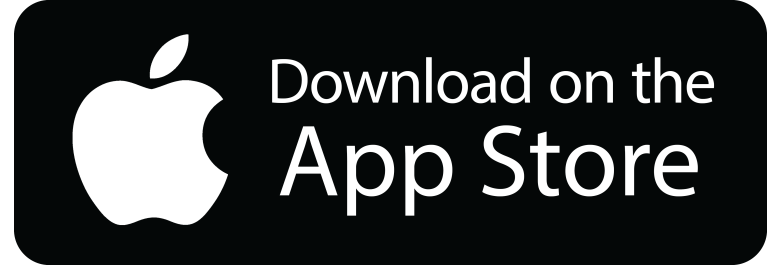A business model is a blueprint for a company's
success. The Lean Business Model Canvas (LMC) is a simplified version of the
Business Model Canvas (BMC), designed to help businesses create a clear and
concise plan. Unlike the traditional business plan that could be hundreds of
pages long, the LMC is a one-page document that helps businesses map out their
ideas quickly and efficiently.
The LMC is essential because it provides a clear and concise overview of your business plan. It allows you to see the big picture and make better decisions based on customer needs and market trends. With the LMC, you can quickly identify areas where you can improve your offerings, streamline your operations, and cut costs. Additionally, the LMC helps businesses remain agile and responsive to changes in the market, which is crucial in today's fast-paced business environment. Now that you understand the importance of LMC, let's go through the nine steps to fill it in.
1. Problem:
Identify the top 1-3 problems your business solves. The first step is to understand the problems that your business solves. This is the foundation of your business, and you need to be crystal clear on what your customers need. By identifying the problems your business solves, you can create a targeted approach to solving them, which will help you deliver better customer value.
Example: A ride-hailing app like Uber solves the problem of transportation, making it easy for people to get around without owning a car.
2. Customer Segments:
Define the groups you want to serve. Next, you need to define the customer segments you want to target. This could be a mass, niche, segmented, or diversified market. Understanding your customer segments helps you create targeted marketing and communication strategies.
Example: A ride-hailing app could target frequent business travellers or tourists who need transportation services.
3. Unique Value Proposition:
What sets you apart? Your unique value proposition (UVP) is what sets you apart from your competitors. It's essential to identify your UVP, as it helps you differentiate yourself in a crowded market. Your UVP should describe your offerings, the needs you meet, and why customers should choose you over your competitors.
Example: Uber's UVP is the convenience of on-demand transportation that's affordable and reliable.
4. Solution:
List the top 1-3 solutions to the problems your business addresses. In this step, you need to identify the solutions your business provides to the problems you identified in step one. Remember, not every solution is the perfect fit, so it's essential to evaluate which solutions will provide the most value to your customers.
Example: Uber's solution is to provide a reliable and affordable transportation service with an easy-to-use app.
5. Channels:
Determine how to reach and communicate with each customer segment. Your channels are the ways you reach and communicate with your customers. It's essential to establish touchpoints to grab attention, deliver value, provide support, and evaluate your proposition. By understanding your channels, you can create targeted marketing and communication strategies.
Example: Uber's channels include the app, social media, and email marketing.
6. Revenue Streams:
Describe cash flow from each segment. In this step, you need to describe the revenue streams for each customer segment. Consider the price your customers are willing to pay for the value they receive. By understanding your revenue streams, you can optimise your pricing strategy and ensure that your business is profitable.
Example: Uber generates revenue by taking a commission on each ride and offering premium services for an additional fee.
7. Cost Structure:
List all costs to operate your business profitably. To operate your business profitably, you need to list all costs, including creating and delivering value, acquiring and maintaining customers, and generating revenue. This step helps you understand your cost structure and identify areas where you can reduce costs. Thinking about these two steps help you develop financial skills for entrepreneurs.
Example: Uber's costs include driver salaries, marketing and advertising, and technology development.
8. Key Metrics:
Identify the indicators that show your business's performance. Identifying key metrics is essential to measuring your business's performance. These metrics could be revenue, customer acquisition cost, churn rate, or customer lifetime value. By identifying key metrics, you can monitor your progress and adjust your strategy accordingly.
Example: Uber's key metrics include the number of rides per day, customer satisfaction, and driver retention rates.
9. Unfair Advantage:
What unique asset do you have that others can't buy? Your unfair advantage is what sets you apart from your competitors and gives you a competitive edge. It could be a unique product innovation, team talent, or loyal customers. By identifying your unfair advantage, you can create a sustainable competitive advantage that's difficult for others to replicate.
Example: Uber's unfair advantage is its first-mover advantage, established brand, and advanced technology.
Key Differences between BMC and LMC
The BMC and LMC are both business model tools, but there are some key differences between them. The BMC is a more comprehensive tool that includes building blocks that cover all aspects of a business, including partnerships, activities, and resources. The LMC, on the other hand, is a simplified version that focuses on the essential elements of a business model, such as customer value and revenue streams.
Here's a side-by-side table comparing the differences between the Business Model Canvas (BMC) and Lean Business Model Canvas (LMC) in terms of the boxes to fill in:
The LMC is essential because it provides a clear and concise overview of your business plan. It allows you to see the big picture and make better decisions based on customer needs and market trends. With the LMC, you can quickly identify areas where you can improve your offerings, streamline your operations, and cut costs. Additionally, the LMC helps businesses remain agile and responsive to changes in the market, which is crucial in today's fast-paced business environment. Now that you understand the importance of LMC, let's go through the nine steps to fill it in.
1. Problem:
Identify the top 1-3 problems your business solves. The first step is to understand the problems that your business solves. This is the foundation of your business, and you need to be crystal clear on what your customers need. By identifying the problems your business solves, you can create a targeted approach to solving them, which will help you deliver better customer value.
Example: A ride-hailing app like Uber solves the problem of transportation, making it easy for people to get around without owning a car.
2. Customer Segments:
Define the groups you want to serve. Next, you need to define the customer segments you want to target. This could be a mass, niche, segmented, or diversified market. Understanding your customer segments helps you create targeted marketing and communication strategies.
Example: A ride-hailing app could target frequent business travellers or tourists who need transportation services.
3. Unique Value Proposition:
What sets you apart? Your unique value proposition (UVP) is what sets you apart from your competitors. It's essential to identify your UVP, as it helps you differentiate yourself in a crowded market. Your UVP should describe your offerings, the needs you meet, and why customers should choose you over your competitors.
Example: Uber's UVP is the convenience of on-demand transportation that's affordable and reliable.
4. Solution:
List the top 1-3 solutions to the problems your business addresses. In this step, you need to identify the solutions your business provides to the problems you identified in step one. Remember, not every solution is the perfect fit, so it's essential to evaluate which solutions will provide the most value to your customers.
Example: Uber's solution is to provide a reliable and affordable transportation service with an easy-to-use app.
5. Channels:
Determine how to reach and communicate with each customer segment. Your channels are the ways you reach and communicate with your customers. It's essential to establish touchpoints to grab attention, deliver value, provide support, and evaluate your proposition. By understanding your channels, you can create targeted marketing and communication strategies.
Example: Uber's channels include the app, social media, and email marketing.
6. Revenue Streams:
Describe cash flow from each segment. In this step, you need to describe the revenue streams for each customer segment. Consider the price your customers are willing to pay for the value they receive. By understanding your revenue streams, you can optimise your pricing strategy and ensure that your business is profitable.
Example: Uber generates revenue by taking a commission on each ride and offering premium services for an additional fee.
7. Cost Structure:
List all costs to operate your business profitably. To operate your business profitably, you need to list all costs, including creating and delivering value, acquiring and maintaining customers, and generating revenue. This step helps you understand your cost structure and identify areas where you can reduce costs. Thinking about these two steps help you develop financial skills for entrepreneurs.
Example: Uber's costs include driver salaries, marketing and advertising, and technology development.
8. Key Metrics:
Identify the indicators that show your business's performance. Identifying key metrics is essential to measuring your business's performance. These metrics could be revenue, customer acquisition cost, churn rate, or customer lifetime value. By identifying key metrics, you can monitor your progress and adjust your strategy accordingly.
Example: Uber's key metrics include the number of rides per day, customer satisfaction, and driver retention rates.
9. Unfair Advantage:
What unique asset do you have that others can't buy? Your unfair advantage is what sets you apart from your competitors and gives you a competitive edge. It could be a unique product innovation, team talent, or loyal customers. By identifying your unfair advantage, you can create a sustainable competitive advantage that's difficult for others to replicate.
Example: Uber's unfair advantage is its first-mover advantage, established brand, and advanced technology.
Key Differences between BMC and LMC
The BMC and LMC are both business model tools, but there are some key differences between them. The BMC is a more comprehensive tool that includes building blocks that cover all aspects of a business, including partnerships, activities, and resources. The LMC, on the other hand, is a simplified version that focuses on the essential elements of a business model, such as customer value and revenue streams.
Here's a side-by-side table comparing the differences between the Business Model Canvas (BMC) and Lean Business Model Canvas (LMC) in terms of the boxes to fill in:
Write your awesome label here.
Never miss our news!
Thank you!
Get updates on live streams, news and more right in your mailbox.



